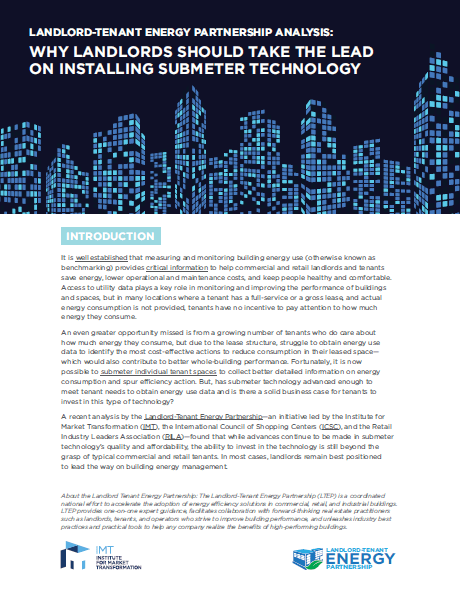It is well established that measuring and monitoring building energy use (otherwise known as benchmarking) provides critical information to help commercial and retail landlords and tenants save energy, lower operational and maintenance costs, and keep people healthy and comfortable. Access to utility data plays a key role in monitoring and improving the performance of buildings and spaces, but in many locations where a tenant has a full-service or a gross lease, and actual energy consumption is not provided, tenants have no incentive to pay attention to how much energy they consume.
An even greater opportunity missed is from a growing number of tenants who do care about how much energy they consume, but due to the lease structure, struggle to obtain energy use data. Fortunately, it is now possible to submeter individual tenant spaces to collect better detailed information on energy consumption and spur efficiency action. But, has submeter technology advanced enough to meet tenant needs to obtain energy use data and is there a solid business case for tenants to invest in this type of technology?
A recent analysis by the Landlord-Tenant Energy Partnership—an initiative led by the Institute for Market Transformation (IMT), the International Council of Shopping Centers (ICSC), and the Retail Industry Leaders Association (RILA)—found that while advances continue to be made in submeter technology’s quality and affordability, the ability to invest in the technology is still beyond the grasp of typical commercial and retail tenants. In most cases, landlords remain best positioned to lead the way on building energy management. This resource looks at the top five reasons for landlords to install submeters, as well as successful submetering programs being implemented by companies, and viewpoints from leading energy solution providers.
